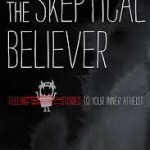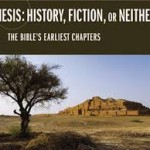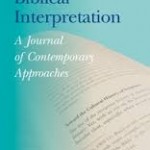 I recently posted, with some commentary, an article published by Stephen L. Young on inerrantist biblical scholars employing “protective strategies” and “privileging insider claims” in their publications.
I recently posted, with some commentary, an article published by Stephen L. Young on inerrantist biblical scholars employing “protective strategies” and “privileging insider claims” in their publications.
In that article, Young, “examines how Evangelical Christian inerrantist scholars theorize their biblical scholarship and its relation to the broader academy, highlighting (1) their self-representation as true academics, and (2) the ways they modulate historical methods to prefer interpretive options that keep the Bible inerrant.”
Young just published a second article illustrating this thesis by focusing on the complex issue of Israelite literacy: “Maximizing Literacy as a Protective Strategy: Redescribing Inerrantist Scholarship on Israelite Literacy.”
The article appears in Biblical Interpretation 23 (2015): 145-73 and the full article can be accessed here.
I won’t discuss the article here, though I reproduce below a few portions from the first few pages of the article that should give interested readers a sense of Young’s point.
The abstract (my emphasis):
Evangelical Christian inerrantist scholars consistently maximize the extent of literary reading and writing abilities in ancient Israel, especially beyond scribes, priests, and other elites or professionals. How they frame the issues, handle the data, represent their work as academic historical research, and engage in certain recurring patterns of argumentation invites analysis. This article analyzes the publications of inerrantist scholars on Israelite literacy, in particular Alan Millard and Richard Hess, as examples of inerrantist discourse and argues that their scholarship on Israelite literacy is characterized by protective strategies that privilege biblical claims. The article thus aims to explore part of the historiography of scholarship on Israelite literacy, to provide an accurate account of what precisely inerrantist scholars are doing in their publications on the topic, and to reframe inerrantist scholarship on Israelite literacy as data for the study of religion.
Young includes in his scope 6 articles and essays penned by Millard and 12 books, essays, articles, and book reviews written by Hess
.
Young notes the tendency among inerrantist biblical scholars to collapse the distinction between description and analysis of a text’s claims.
Certain religious studies scholars have developed the classification of “protective strategies” or “protectionism” to designate the practice of collapsing the distinction between describing a religious actor’s (or text’s) claims and analyzing or explaining those claims in ways that do not privilege them by reinscribing them in the analysis. Protective collapsing of the distinction between describing the meaning and claims of a text and analyzing or explaining such claims is a hallmark of apologetic approaches that block analysis of a text in terms of models or options that may not uphold that text’s own claims about itself. By privileging their understandings of the Bible’s claims about its divine nature, inerrancy, and essential unity, inerrantists theorize the necessity of approaching the Bible in ways that do not permit analysis that could cut across the Bible’s own claims. They invalidate such non-privileging approaches with, among other things, the rhetoric of failing to “respect” the Bible or refusing to approach the Bible “on its own terms.” Inerrantists thus collapse the difference between describing a biblical writing’s meaning or claims and analyzing that writing’s claims. (pp. 146-47, my emphasis)
Young focuses on Millard and Hess, however, precisely because they do not frame their own work in this way.
As my previous article illustrates, many inerrantists explicitly orient their scholarship at the outset by stating their commitment to inerrancy. They, accordingly, often contrast their supernatural presuppositions with the illegitimate anti-supernatural presuppositions of non-inerrantist scholars and clarify that their historical methodologies presume the inerrancy of the Bible. But the two inerrantist scholars on whom I focus in the following pages, Alan Millard and Richard Hess, do not frame their work on Israelite literacy in this way. Their publications thus afford an opportunity to extend my redescription of inerrantist scholarship by examining a kind of inerrantist discourse not cov- ered in my previous article. As evidenced by Millard and Hess, some inerrantist scholars do not present their work as distinctively inerrantist scholarship that presumes the inerrancy of the Bible and modifies historical methods to prefer analyses of the Bible that uphold inerrancy. They simply represent their arguments as standing on the strength of their mastery of relevant ancient data.
To focus specifically on Millard and Hess and their scholarship on Israelite lit-eracy, their work consistently maximizes the extent of literary reading and writing abilities in ancient Israel. Furthermore, they pursue their research on Israelite literacy ostensibly as historians and situate their projects within the arena of critical historical inquiry. I will demonstrate, however, that analysis of their work invites hypothesizing about the operation of factors and considerations beyond those of academic historical study.
I argue that these factors and considerations relate to the methodological constraints on biblical scholarship that are characteristic of the inerrantist fields that Hess and Millard inhabit. To the extent that my suggestion is accurate, the variance of their positions and arguments from those of other critical-historical scholars does not simply reflect expected kinds of disagreement among academics addressing complex issues through standard investigative methods. Instead, Millard and Hess protectively privilege the claims of biblical texts and consistently orient their scholarship around arguing for historical conditions that permit privileging biblical claims. I will argue in particular that their representations of widespread Israelite literacy serve to uphold what they take to be biblical depictions of literary literacy as a “normal,” or normative, Israelite ability. Sometimes they make this point relatively explicitly. Other times this privileging commitment remains unstated but is still a plausible explanation for the specific shape of their high assessments of Israelite literacy. Accordingly, in my analysis I will focus in particular upon details of Hess’ and Millard’s publications that signal various kinds of protective commitments to the Bible. (pp. 147-48, my emphasis)
Young adds a helpful clarification on p. 149, that his analysis of the work of Millard and Hess is in no way an accusation of “insincerity in their scholarship” but rather follows “Practice Theory [which] directs attention to, among other things, the material and symbolic interests bound up with practices, the associated social dynamics of recognition and attraction to them, and their associated fields and participants, but precisely without speculation about deep motives or suspicions about insincerity.”
The article is, like the previous one, heavily documented, and should certainly lead to some stimulating conversations.












